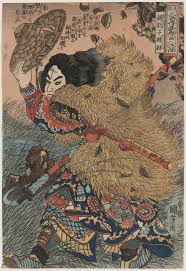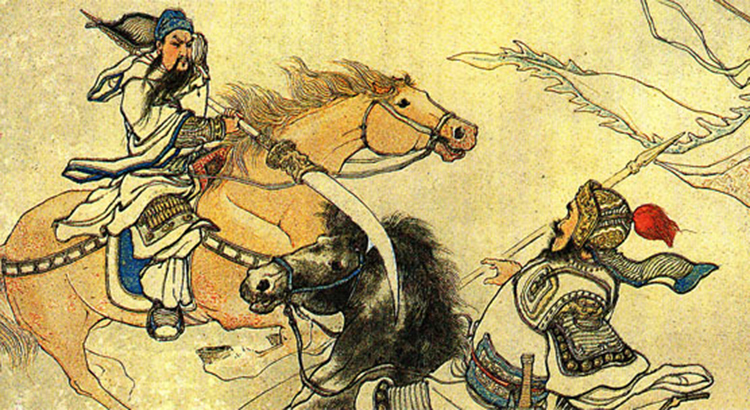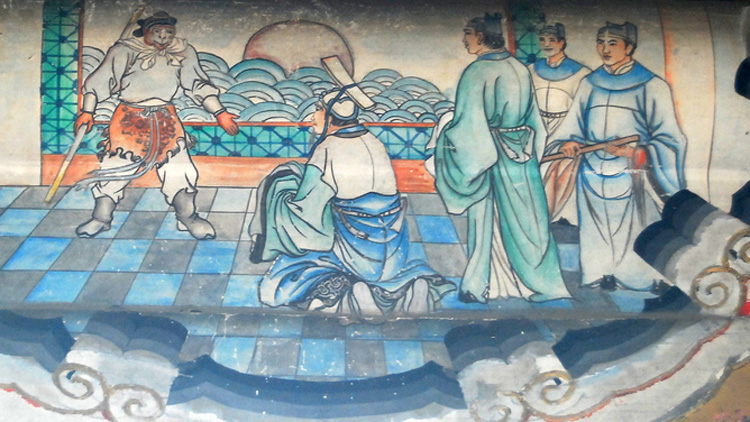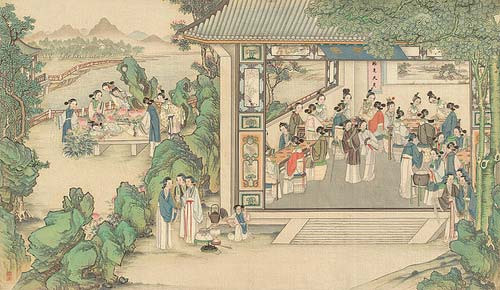Water Margin 水浒传

What is it?
The earliest of China’s four great classic novels, Water Margin is the story of 108 outlaws and vagabonds enlisted by the government to fight foreign invaders, later sent to attack the southern emperor Fang La. Based loosely on real life rebel Song Jiang, who led an uprising in the early twelfth century, the novel is set around Mount Liang in Shandong, which was largely a lawless Wild West region, controlled by local warlords.
Why is it important?
China’s answer to Robin Hood is ripe with folklore and cultural history, and still inspires many contemporary influences. It has been adapted into vast arrays of rewrites, films, TV dramas, music and operas. Surprisingly popular in Japanese manga, the novel has even inspired video games, a 1610 erotic novel, and a theme park. It is a fascinating glimpse into a bygone China of worthy bandits, corrupt court officials, filial piety, concubines, goddesses and emperors.
What else?
There is some uncertainty over the authorship of Water Margin. Most attribute the novel to Shi Nai’an, but dissenters argue either parts or all of the novel was actually written by others – possibly Luo Guanzhong, who wrote Romance of the Three Kingdoms. Some have suggested that Shi Nai’an was a pseudonym for Luo himself.
Romance of the Three Kingdoms 三国演义

What is it?
A historical novel published in the late 1300s, but set around 169AD, towards the end of the Han dynasty. Merging legend, history and myth, the novel follows hundreds of characters, centred around the three power blocs that emerged from the remains of the collapsed dynasty, and eventually formed the states of Cao Wei, Shu Han, and Eastern Wu.
Why is it important?
A tale of personal and military battles and intrigues, Romance of the Three Kingdoms is largely considered one of the most important works of literature in East Asia. Although originally believed to have been written somewhere around 1380, the novel draws on a plethora of earlier historical events, including the Yellow Turban Rebellion, plus fruitful examples of Tang poems and Yuan operas. In short, it’s a storytelling extravaganza through an extremely turbulent period of Chinese history.
What else?
In the 1660s, Mao Lun and Mao Zonggang cut the text back to a mere 120 chapters, reducing 900,000 characters to 750,000, and the famous opening lines were actually added in the revisions: ‘The empire, long divided, must unite; long united, must divide.’
Journey to the West 西游记

Shi Zhao
What is it?
Journey to the West was published in the 16th century during the Ming dynasty, and attributed to writer Wu Cheng’en. It’s based around the true story of monk Xuanzang, who in 629AD left his temple in Chang’an and made a perilous pilgrimage across Gansu and Qinghai, through Kyrgyzstan, Uzbekistan, and Afghanistan, reaching India in 630. The stories in Journey to the West loosely follow his travels – together with infamous monkey Sun Wukong (also known as the Monkey King), and a series of demons, nymphs, monsters and gods.
Why is it important?
One of the most famous Chinese stories, the novel is a colourful array of adventure and strategy, with the pilgrims overcoming an impressive total of 81 trials and dangers, successively tempting the motley crew with trickery, wealth or beauty. The 1986 TV adaptation, starring Liu Xiao Liu Tong, remains the best-known adaptation and a staple on Chinese TV, faithfully re-screened repeatedly every Chinese New Year.
What else?
Along with Sun Wukong, Xuanzang travels with a half-man, half-pig called Zhu Bajie. Once an immortal, Zhu Bajie fell out of favour with the gods by flirting with the moon goddess, being banished to the mortal world and birthed by a pig. His interest in women remained, however, and before joining the pilgrimage, he married a girl who only discovered afterwards that her groom was, in fact, a pig.
Dream of the Red Chamber 红楼梦

What is it?
An 18th-century saga by Cao Xueqin about a noble family that falls from grace. The most recent of China’s four classics, written in the 1750s, the novel focuses on life in two branches of the wealthy, aristocratic Jia clan, particularly the dashing male heir Jia Baoyu, who was supposedly born with a piece of jade in his mouth.
Why is it important?
Packed with fascinating detail of China’s social and cultural life at the time, the oft-satirical book is twice as long as War and Peace, and often considered the Chinese novel. It is also politically important; aside from being a portrait of 18th-century power struggles, Chairman Mao claimed to have read all five volumes of Dream of the Red Chamber five times. A must-read for anyone interested in China’s enormously complex social structures, family roles, and Confucian traditions.
What else?
The author’s life mirrored that of his characters; while Cao’s grandfather was an important civil servant to Emperor Kangxi, his father’s fall from grace meant Cao grew up out of favour. He ended up drinking too much, sleeping in barns and writing Dream of the Red Chamber in chapters, often circulated among friends in exchange for food and wine. Cao died in 1763, and his work wasn’t published as one novel until 1791 – it has been speculated that more chapters exist, spirited away by the eminent people referenced in the text.
